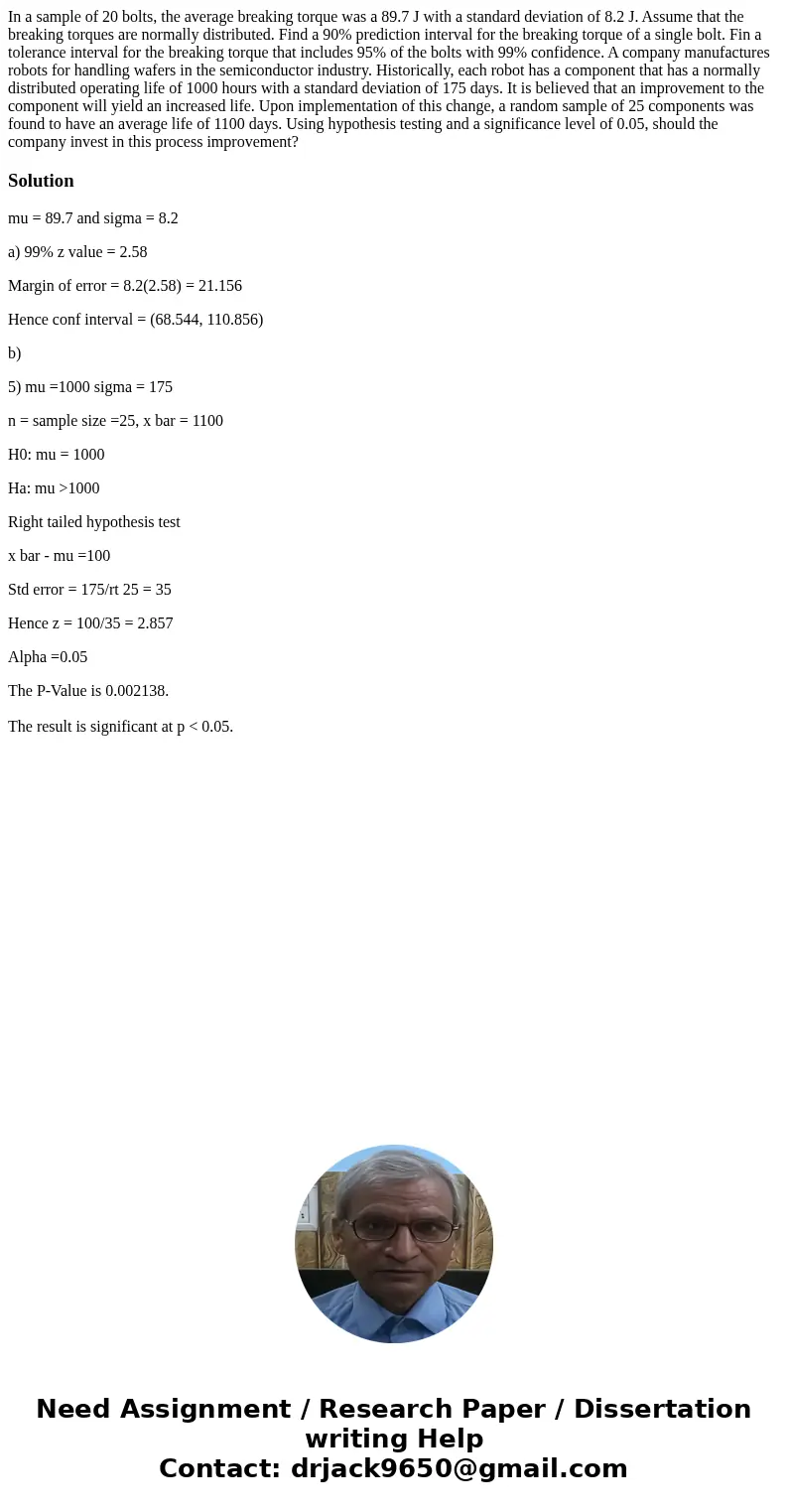In a sample of 20 bolts the average breaking torque was a 89
In a sample of 20 bolts, the average breaking torque was a 89.7 J with a standard deviation of 8.2 J. Assume that the breaking torques are normally distributed. Find a 90% prediction interval for the breaking torque of a single bolt. Fin a tolerance interval for the breaking torque that includes 95% of the bolts with 99% confidence. A company manufactures robots for handling wafers in the semiconductor industry. Historically, each robot has a component that has a normally distributed operating life of 1000 hours with a standard deviation of 175 days. It is believed that an improvement to the component will yield an increased life. Upon implementation of this change, a random sample of 25 components was found to have an average life of 1100 days. Using hypothesis testing and a significance level of 0.05, should the company invest in this process improvement?
Solution
mu = 89.7 and sigma = 8.2
a) 99% z value = 2.58
Margin of error = 8.2(2.58) = 21.156
Hence conf interval = (68.544, 110.856)
b)
5) mu =1000 sigma = 175
n = sample size =25, x bar = 1100
H0: mu = 1000
Ha: mu >1000
Right tailed hypothesis test
x bar - mu =100
Std error = 175/rt 25 = 35
Hence z = 100/35 = 2.857
Alpha =0.05
The P-Value is 0.002138.
The result is significant at p < 0.05.

 Homework Sourse
Homework Sourse